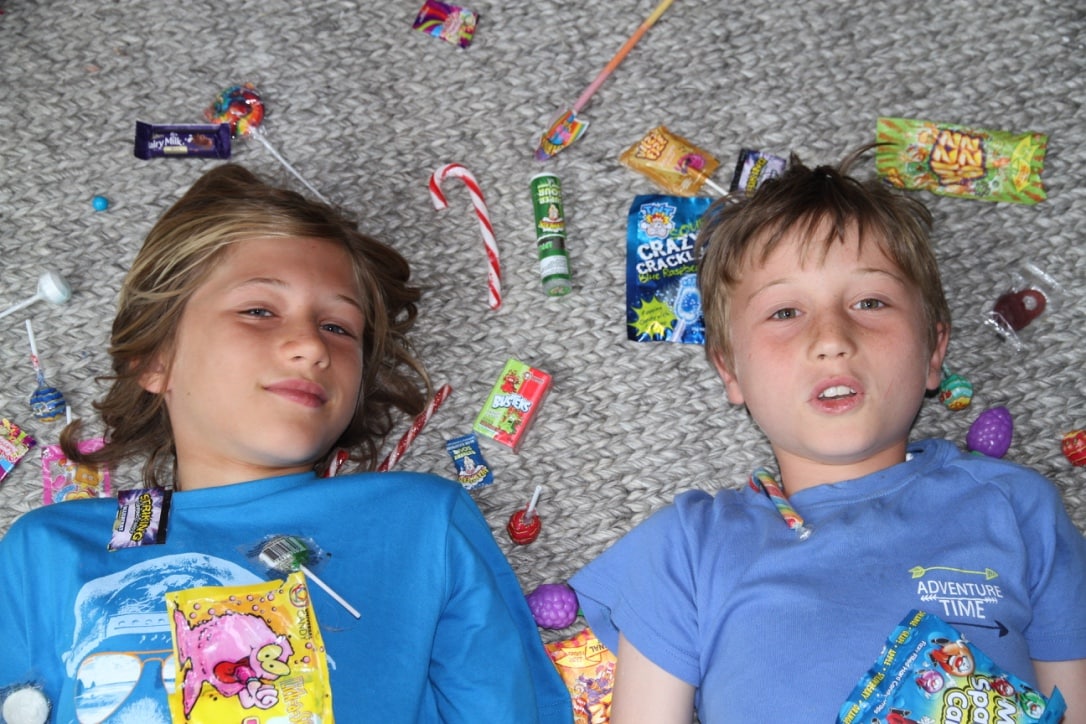“Mom, I want to do a 40 day no sugar challenge.”
I never expected those words to be uttered by my six year old, but when she did, I was delighted.
It never crossed my mind that something like this would be too hard for a child. Little kids are strong, resilient creatures who, with some motivation and the right kind of support, are more than capable of taking on challenges of their own. I was reminded of this when I suggested that my daughter try the challenge for a shorter 30 days, but she insisted on 40 (in the end, she completed 30). I didn’t argue because I knew she could do it… and I was ready to help.
Why a no sugar challenge?
I suspect that my daughter got the idea from a YouTube show, where the entire family embarked on their own no sugar challenge. She also knows how much I dislike her constant sugar consumption (I do comment on it often) and how much I love doing my own challenges. So she probably made the very smart and very correct assumption that a successful “no sugar challenge” would result in an extremely generous prize.
Here are the strategies we’re employing to make it successful:
Incentivize her. The first thing I did was set up some appetizing incentives. For every 10 days that she sticks to the challenge, my daughter receives a reward of her choosing. The prizes start small for days 10, 20, and 30, like the journal pictured below, but the grand prize for completing all 40 days is significant (it’s from the American Girl doll store).
Remind her. Visual reminders of how far we’ve come, what we’ve accomplished, and what is at stake are powerful motivators. We printed out a daily calendar and posted it next to her bed where she can look at it often. At the end of every day, she places a sticker over the completed day.
At night, she’ll look through the American Girl doll catalog or we’ll browse Amazon for the other items she wants, so she’s constantly reminded of what she’s working towards.
Include her in the process. Together, we established the ground rules of what foods are acceptable (i.e. fresh fruit) and what’s off limits (all added sugar, fruit juices and purees). She accompanies me to the grocery store and the farmer’s market where we look at food labels and pick out healthy items for the week.
Make it hard to fail. As parents, we can design an environment that minimizes opportunities to cheat. We can:
- Join them in the challenge
- Not buy the junk food, or at least keep it out of sight and out of reach
- Skip trips to the ice cream store or not order dessert at the restaurant
- Anticipate temptations that might arise. For example, if we go somewhere that we know will have have junk food, my daughter and I will talk about the things she won’t be able to eat, how she’ll handle it, and how I’ll help her. Sometimes she’ll tell the host parent or adult in charge about her challenge, which is always met with words of admiration and support (another great motivator).
Praise the effort. Last week we went to a birthday party. When the kids sat down for cake, my daughter excused herself to the bouncy house so she wouldn’t have to watch all of her friends eat. There have been several occasions like this where I’ve watched her struggle, contemplate and ultimately walk away from the temptation, and I’m quick to praise her for her willpower and strength. “That must have been hard,” I’ll say. “You should be really proud of how you handled that.”
Accept the consequences and keep going. Over the weekend, my husband bought my daughter some kettle corn. He also made her a peanut butter and jelly sandwich. He clearly wasn’t thinking and she falsely assumed that since Daddy provided the food, it was okay to eat it. But she knew, deep down, that she’d slipped up, so the next day, she came to me and ‘confessed’ by asking me “Mom, why was that popcorn so good?”
A discussion ensued about how kettle corn and jelly contained added sugar, and that she had violated the rules of her challenge. She cried and begged for another chance. She didn’t want the challenge to be over, and neither did I. So we agreed to forego the 20 day prize as a consequence, and that she would be extra conscious about the things she puts into her mouth.
17 days in and one pink journal later, my daughter’s no sugar challenge continues. I asked her if she felt any different. “Yes,” she said. “My body is not so tired and my tummy doesn’t hurt.” I’ve noticed that too. She also falls asleep more quickly at night and wakes up in the morning without complaining.
More importantly, I can see her realizing that she absolutely can accomplish the hard things she sets out to do.
How to do your own no sugar challenge
For the next 30 days, eliminate all refined sugars and artificial and natural sweeteners.
Anything that contains added sugar of any kind is off limits, so make sure you read the label, study the ingredients and look for anything that might be disguised as sugar such as agave nectar, barley malt, cane juice, coconut palm sugar, dextrin, dextrose, fructose, maltodextrin, molasses, muscovado and rice syrup
What about fruit? Technically speaking, fresh fruit contains plenty of sugar in the form of fructose, and if you make a fresh fruit smoothie, you could easily consume 35g of sugar. On the other hand, fruit has fiber, plenty of nutrients and natural fruit sugars. If you choose to eat fruit in this challenge, limit yourself to no more than 1-2 cups per day.
And finally, if you want some tips on how to stick to a diet on your first try, click here.











